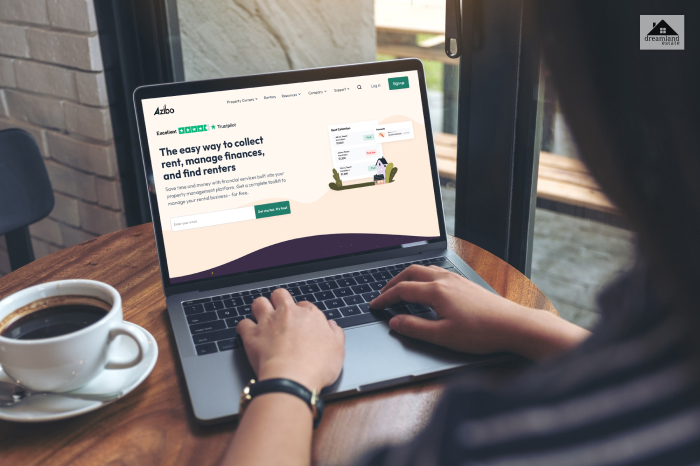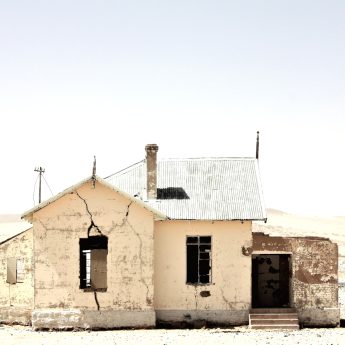What Is A Rent Ledger? Know More The Most Powerful Tool In The Real Estate Business

The top goal of any real estate business is to generate as much profit as you reasonably can. Even in the case of rental properties, it may be quite difficult to ensure that the rent is collected timely without facing the trouble of going through multiple payment receipts or downloading monthly bank statements.
A rent ledger is considered to be one of the most valuable reports that property owners may use to help increase property value and cash flow.
In this article, we will go through a detailed overview of what a rent ledger is and how it is an important piece of report for every property holder.
Key Takeaways ✔ A rent ledger is the most versatile report that a real estate investor can possibly have. ✔ A rent ledger includes all the key items like the past due rent, rent received, the expiration date of the lease, and the security deposit amount. ✔ Property managers, investors, tenants, and lenders may all use a rent ledger. ✔ A good rent ledger benefits you by improving your financial performance and identifying the opportunities that contribute to increasing the value of a property.
Functions Of A Rent Ledger?
It is a documented report that property managers or real-estate investors use to take a look at the status of rent payments for each tenant.
The ledger consists of all the key data like the amount of the monthly rent, when the rent was received, and how much. Owners may also use a rent ledger to check for any outstanding balance that is owned by a tenant, and the late fees that are evaluated, along with the date when the next payment is due.
One of the best ways to view a rent ledger is a combination of the gross income statement and the accounts receivable report concerning rental properties. Every single business is supposed to maintain a record of profits received and outstanding payments due to help maintain a better cash flow.
Information On A Rent Ledger

Alongside providing payment updates, a well-designed rent ledger additionally provides certain other information too.
Therefore if you are planning on making a smooth rent ledger, make sure to incorporate the following information.
- Name of the owner
- Address of the property
- Property type (single-family, multifamily, short-term rental)
- Size of the lot
- Use or zoning
- Address/Unit number, which is only applicable to multifamily buildings
- Name of the tenant
- Measurement of the home or unit
- Number of bedrooms/bathrooms
- Starting the day of the lease
- Ending date of the lease
- Amount of the monthly rent
- Additional rent like pet, appliance, or roommate rent
- Due date of rent
- Date of rent paid
- Security deposit
- Notes (offer tenant incentive for rent renewal, carpet due for replacement, etc.)
How To Use A Rent Ledger?

Let us now look at how different stakeholders dealing with properties typically use a rent ledger.
Investor
An investor of rental properties may use a rent ledger to help predict the problems related to cash flow even before they occur and identify probable opportunities a property offers.
An investor can review the rent ledger of a property over the years to understand if the total gross income of the property over the years has increased, decreased, or stayed the same.
For instance, if the rental income of a property had been constantly going down for years, that may indicate a problem with either the management of the property or the property itself.
Property Manager
A real estate manager may hire a property manager who will deal with the everyday business of the property, like making sure that the house is well maintained and the rental profits are maximized.
Reviewing a rent ledger can help a property manager quickly evaluate if any of the tenants are running late on the rent and instantly get in touch with the tenant.
A rent ledger is also a pretty useful tool that a property manager uses in order to help lower tenant turnover.
Lender
One of the many aspects that a lender looks at while approving or rejecting a rental property loan is the net operating income or the NOI, along with the debt-service coverage ratio [DSCR] of the property.
NOI is the cash that is left over after the collection of the rent is done, and the primary property operating expenses have been paid off; the mortgage is excluded.
Once the lender reviews the rent ledger in predicting the real NOI that the property might generate, he will then calculate the debt-service coverage ratio or the DSCR. The
DSCR will compare the mortgage payment of each month with the NOI of the property.
This helps to find out the excess cash flow of each month after deducting the operating expenses and paying off the mortgage.
Tenant
As a part of the screening process for tenants, a tenant may use a copy of a rent ledger while renting a new home to get a competitive edge.
A rent ledger that gives proof that the tenant has paid all monthly rent on time is one of the most powerful documents to provide to the landlord. A rent ledger may also be helpful in speeding up the approval process for new tenants in case of a previous owner or manager that is considerably slow in responding to rental history inquiries in order to verify the occupancy and payment history of the tenant.
Benefits Of Having A Rent Ledger
Now you know what a rent ledger is and how different stakeholders make use of it accordingly. Let us now take a quick look at the benefit of maintaining a well-planned rent ledger.
- Ensures an improved financial performance.
- Identifies a spectrum of opportunities.
- Documents the performance of the tenants.
Queries That A Rent Ledger May Answer

A rent ledger may be a fairly simple document, but there are many surprising queries that it may solve.
Some of the questions that you may find answers to in a rent ledger are:
- What amount of gross rental income the property is generating at present?
- Will the rental income increase, decrease, or stay the same in the future?
- Are there any opportunities to raise the gross rental income?
- Is the property manager performing as guaranteed?
- Which of the tenants are paying full rent and on time?
- Are late fees being evaluated and collected as recommended by the lease?
- Which of the leases are due to expire, and when?
- Is the security deposit sufficient enough to cover any potential damage that the tenant causes?
- What is the rent payment history of the tenant?
- How long has each tenant been occupying the property?
- Is the remaining cash flow after the mortgage payment enough to pay for operating expenses?
- Are there proper records of rent payments by the landlord or the property manager?
- Are late fees goes through fair evaluation?
Best Automated Rent Ledgers
Recording rent details can be a tedious job. As a landlord, you must record and assimilate a range of details to make the rent ledger work well. Therefore, it can become a monumental task.
Think about an application that can help you streamline this whole process to a great extent. Yes, some applications can help you streamline the process of recording details for the rent ledger.
However, this is an informative list and not a ranking list. Therefore, approach the discussion accordingly.
Here are some of these applications that can help you automate maintaining a rent ledger.
Azibo

Azibo is one of the best rent recording applications in the market. The application is known for its revolutionary approach to the deal and can handle complex calculations and lingering.
Azibo is an automated application. You can connect the application with your banking applications. As a result, you will be fine keeping track of all the payments and lapses that come your way.
Landlord Studio

Landlord Studio is another revolutionary automated rent ledger application that has really changed how people record data. If you are a self-managing landlord, this application is the best one for you.
The Landlord Studio is completely cloud-based. As a result, you will not face any loss of data. This is a paid software that charges a nominal fee of $15 per month. Therefore, you can expect the best of the best services.
AppFolio

AppFolio is more of a property management company than an automated rent ledger. It works on a large scale and is, therefore, best suited for commercial landlords.
AppFolio is best explained as a complete network that not only records the financial side of things but also helps in building a community. As a landlord, you can connect with tenants and keep an open line of communication.
RentRedi

RentRedi is an exceptionally user-friendly property management application that has made some fantastic headways in the last couple of years. The platform streamlines everything from rent collection to maintaining a complete account.
Therefore, the software can be convenient for people who want to avoid stress themselves with data collection. Like most other platforms we have talked about, RentRedi also makes sure that data is well collected and keeps an open line of communication between tenants and landlords.
Tenant Cloud

Tenant Cloud is one of the newest rent ledger applications on the market. This is a great software that has achieved great name and success in the field. The application is focused on integrating third-party software like QuickBooks. Which in turn adds to the overall USP of the application.
TenantCloud manages the overall rent collection process and even keeps tabs on the complaints and repairs that one needs to make. However, unlike Azibo, you need to feed data manually. Therefore, it can be a little hassle. But for a cheap price point of just $15.60 per month, the application offers more than its weight.
The Bottom Line
A well-planned rent ledger is one of the strongest tools that a real estate investor may have their hands on.
They provide a clear image of the cash flow in property and related deductions. This helps in identifying the financial performance trends in the longer run. I hope this article was insightful enough to clear your doubts regarding a rent ledger. If you have any further questions, feel free to comment down below. I will get back to you as soon as possible.
Read Also:











Leave A Reply